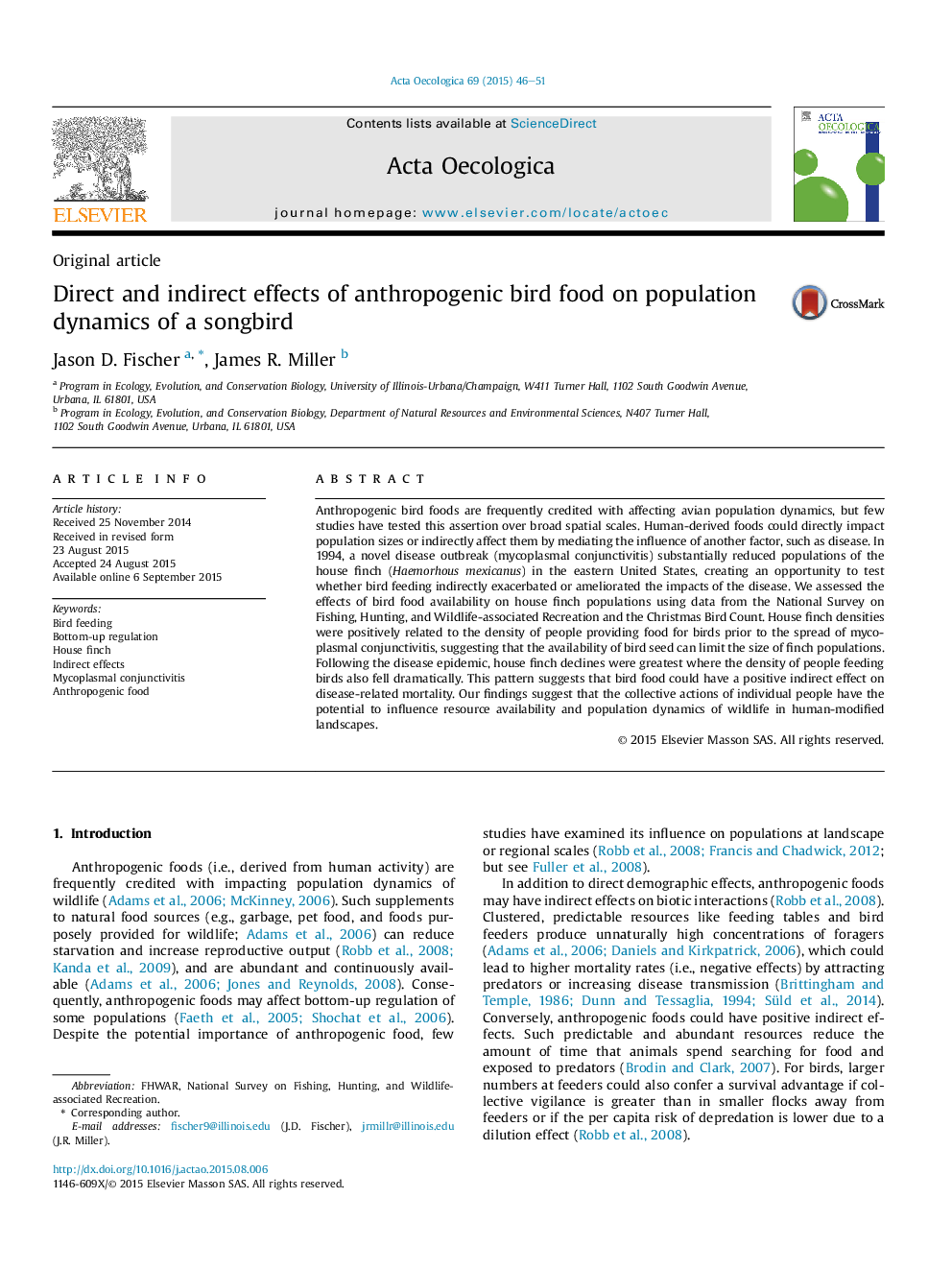| کد مقاله | کد نشریه | سال انتشار | مقاله انگلیسی | نسخه تمام متن |
|---|---|---|---|---|
| 4380640 | 1617703 | 2015 | 6 صفحه PDF | دانلود رایگان |
• Anthropogenic food may directly and indirectly affect population dynamics of wildlife.
• Availability of bird seed directly limited population sizes of house finches.
• Feeding birds may indirectly benefit house finches by reducing disease-related mortality.
• Collectively, actions of individuals determine resource availability that impacts wildlife.
Anthropogenic bird foods are frequently credited with affecting avian population dynamics, but few studies have tested this assertion over broad spatial scales. Human-derived foods could directly impact population sizes or indirectly affect them by mediating the influence of another factor, such as disease. In 1994, a novel disease outbreak (mycoplasmal conjunctivitis) substantially reduced populations of the house finch (Haemorhous mexicanus) in the eastern United States, creating an opportunity to test whether bird feeding indirectly exacerbated or ameliorated the impacts of the disease. We assessed the effects of bird food availability on house finch populations using data from the National Survey on Fishing, Hunting, and Wildlife-associated Recreation and the Christmas Bird Count. House finch densities were positively related to the density of people providing food for birds prior to the spread of mycoplasmal conjunctivitis, suggesting that the availability of bird seed can limit the size of finch populations. Following the disease epidemic, house finch declines were greatest where the density of people feeding birds also fell dramatically. This pattern suggests that bird food could have a positive indirect effect on disease-related mortality. Our findings suggest that the collective actions of individual people have the potential to influence resource availability and population dynamics of wildlife in human-modified landscapes.
Journal: Acta Oecologica - Volume 69, November 2015, Pages 46–51
